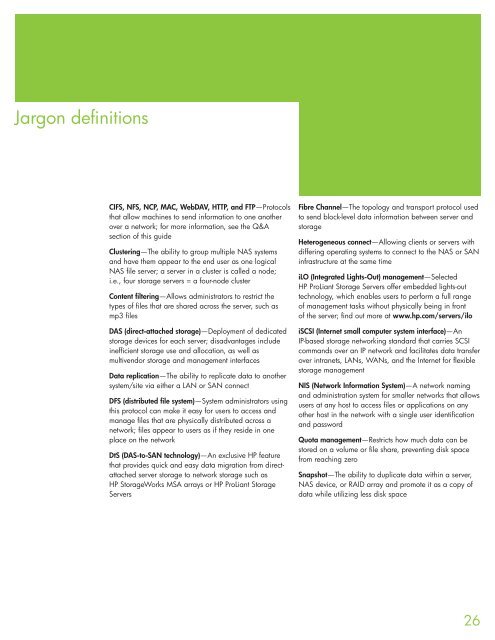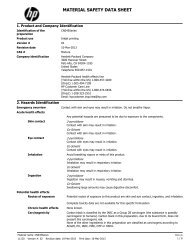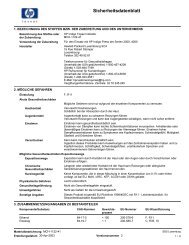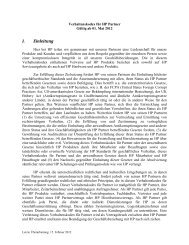Easy as NAS solution guide - HP
Easy as NAS solution guide - HP
Easy as NAS solution guide - HP
Create successful ePaper yourself
Turn your PDF publications into a flip-book with our unique Google optimized e-Paper software.
Jargon definitions<br />
CIFS, NFS, NCP, MAC, WebDAV, HTTP, and FTP—Protocols<br />
that allow machines to send information to one another<br />
over a network; for more information, see the Q&A<br />
section of this <strong>guide</strong><br />
Clustering—The ability to group multiple <strong>NAS</strong> systems<br />
and have them appear to the end user <strong>as</strong> one logical<br />
<strong>NAS</strong> file server; a server in a cluster is called a node;<br />
i.e., four storage servers = a four-node cluster<br />
Content filtering—Allows administrators to restrict the<br />
types of files that are shared across the server, such <strong>as</strong><br />
mp3 files<br />
DAS (direct-attached storage)—Deployment of dedicated<br />
storage devices for each server; disadvantages include<br />
inefficient storage use and allocation, <strong>as</strong> well <strong>as</strong><br />
multivendor storage and management interfaces<br />
Data replication—The ability to replicate data to another<br />
system/site via either a LAN or SAN connect<br />
DFS (distributed file system)—System administrators using<br />
this protocol can make it e<strong>as</strong>y for users to access and<br />
manage files that are physically distributed across a<br />
network; files appear to users <strong>as</strong> if they reside in one<br />
place on the network<br />
DtS (DAS-to-SAN technology)—An exclusive <strong>HP</strong> feature<br />
that provides quick and e<strong>as</strong>y data migration from directattached<br />
server storage to network storage such <strong>as</strong><br />
<strong>HP</strong> StorageWorks MSA arrays or <strong>HP</strong> ProLiant Storage<br />
Servers<br />
Fibre Channel—The topology and transport protocol used<br />
to send block-level data information between server and<br />
storage<br />
Heterogeneous connect—Allowing clients or servers with<br />
differing operating systems to connect to the <strong>NAS</strong> or SAN<br />
infr<strong>as</strong>tructure at the same time<br />
iLO (Integrated Lights-Out) management—Selected<br />
<strong>HP</strong> ProLiant Storage Servers offer embedded lights-out<br />
technology, which enables users to perform a full range<br />
of management t<strong>as</strong>ks without physically being in front<br />
of the server; find out more at www.hp.com/servers/ilo<br />
iSCSI (Internet small computer system interface)—An<br />
IP-b<strong>as</strong>ed storage networking standard that carries SCSI<br />
commands over an IP network and facilitates data transfer<br />
over intranets, LANs, WANs, and the Internet for flexible<br />
storage management<br />
NIS (Network Information System)—A network naming<br />
and administration system for smaller networks that allows<br />
users at any host to access files or applications on any<br />
other host in the network with a single user identification<br />
and p<strong>as</strong>sword<br />
Quota management—Restricts how much data can be<br />
stored on a volume or file share, preventing disk space<br />
from reaching zero<br />
Snapshot—The ability to duplicate data within a server,<br />
<strong>NAS</strong> device, or RAID array and promote it <strong>as</strong> a copy of<br />
data while utilizing less disk space<br />
26

















